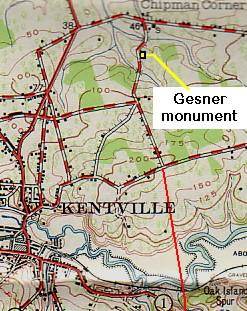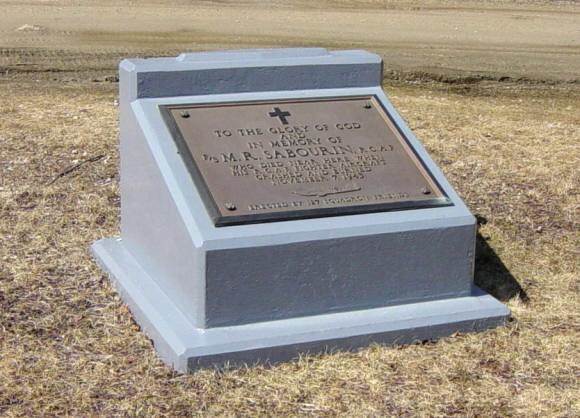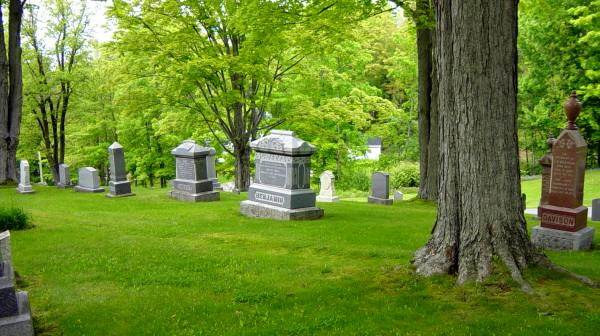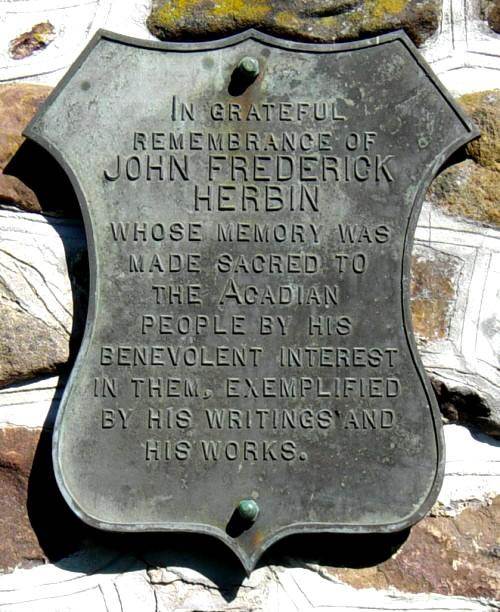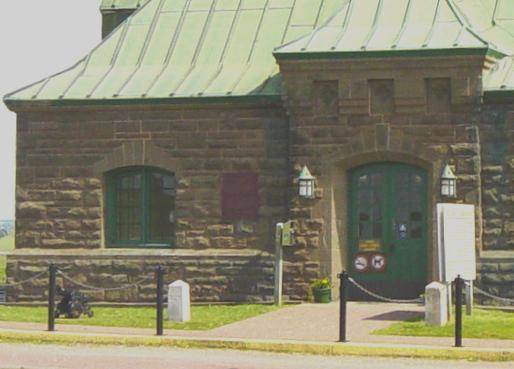
Thomas Dixson 1733 – 1809
The Eddy Rebellion November 1776
Before 1784, this area — now known as Westmorland County,
New Brunswick — was part of Sunbury County in Nova Scotia.
Historic events that occurred here in the 1750s, 1760s, and 1770s
took place in what was then Nova Scotia. Plaques and monuments
commemorating events that happened here before 1784 are included
in this collection of Nova Scotia historic markers. These include the
capture of Fort Beausejour in 1755, and the Eddy Rebellion of 1776.
From 1759 to 1784, Nova Scotia and Massachusetts shared a common boundary.
Nova Scotia’s western boundary was the eastern boundary of Massachusetts.
In 1784, the Nova Scotia side of this boundary became New Brunswick.
In 1820, the Massachusetts side of this boundary became Maine.
Fort Cumberland a.k.a. Fort Beausejour
Westmorland County, New Brunswick
(formerly Sunbury County, Nova Scotia)
GPS location: 45°51’49″N 64°17’33″W
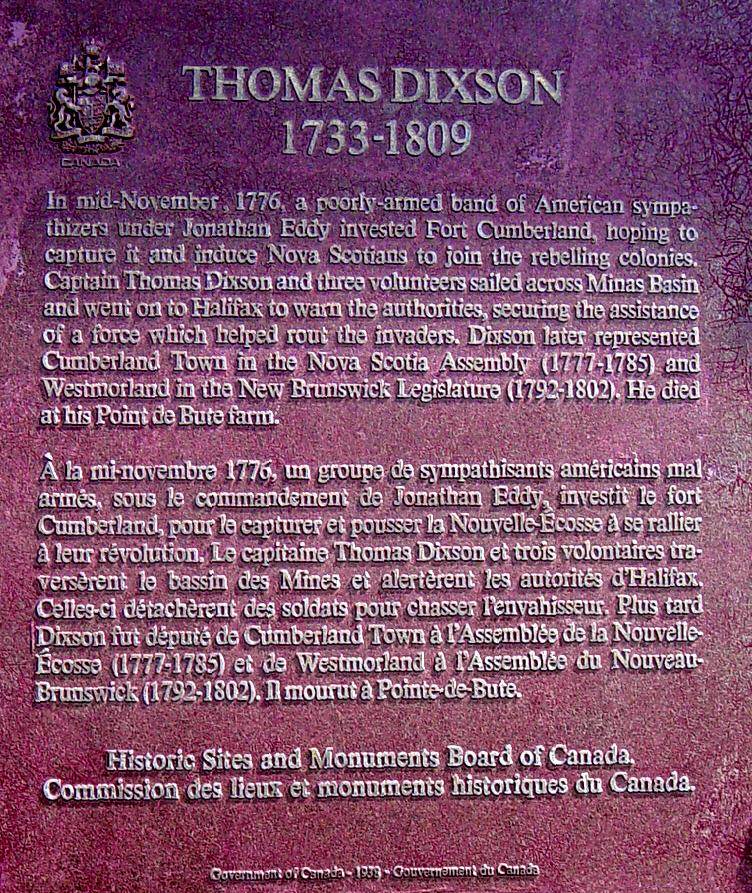
Photographed on 24 June 2005
invested – besieged, attacked
siege – investment, encirclement
(now obsolete)

Thomas Dixson plaque: date 1938
Photographed on 24 June 2005

Photograph of the Fort Beausejour Museum
showing the location of the Dixson plaque.
Photographed on 24 June 2005
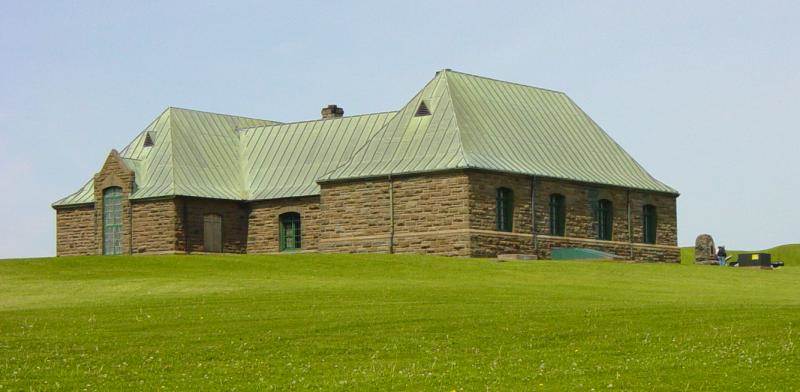
Fort Beausejour Museum, view from the southwest
Photographed on 24 June 2005
The Eddy Rebellion Fort Cumberland
Tantramar Historic Sites: Thomas Dixson plaque
http://heritage.tantramar.com/HS18_1A.html
Born in Dublin, Ireland, in 1732, Thomas Dixson came to Norfolk, Connecticut,
with his parents when he was a young boy. He had an active military career
and his importance during the American Revolution is commemorated by the
above plaque. He was 77 years old when he died and was originally buried in
Jolicure, N.B. On 24 July 1938, his disintered ashes were reburied with
full military honours on the site of the old parade ground of Fort Beausejour.
Dixson was praised as “a soldier who saved the Maritimes for the Empire.”
Speakers at the ceremony recalled “how he had braved the Bay of Fundy
in an open boat to bring reinforcements when the fort was besieged by
American rebels.” More than 500 uniformed troops participated in
the ceremony which was “transmitted…to all parts of the Dominion by the
Canadian Broadcasting network”
— quotations from The Springhill Record, 28 July 1938.
Two Fort Cumberlands
There are two forts named Cumberland that
had military significance in the period 1754-1783
One is located in present-day Cumberland, Maryland.
The other is near present-day Amherst, Nova Scotia.
Fort Cumberland: The Eddy Rebellion, November 1776
Part Six, 1755 – Chapter Twelve, by Peter Landry
http://www.blupete.com/Hist/NovaScotiaBk2/Part2/Ch12.htm
Isthmus of Chignecto: Communications and Transport in the 1750s
Excerpted from the Parrsboro Citizen, 9 December 2000
http://alts.net/ns1625/nshist02.html
The Taking of Fort Beausejour, 1755
http://www.blupete.com/Hist/NovaScotiaBk1/Part6/
Scenes/FortBeauAttackPlan.htm


